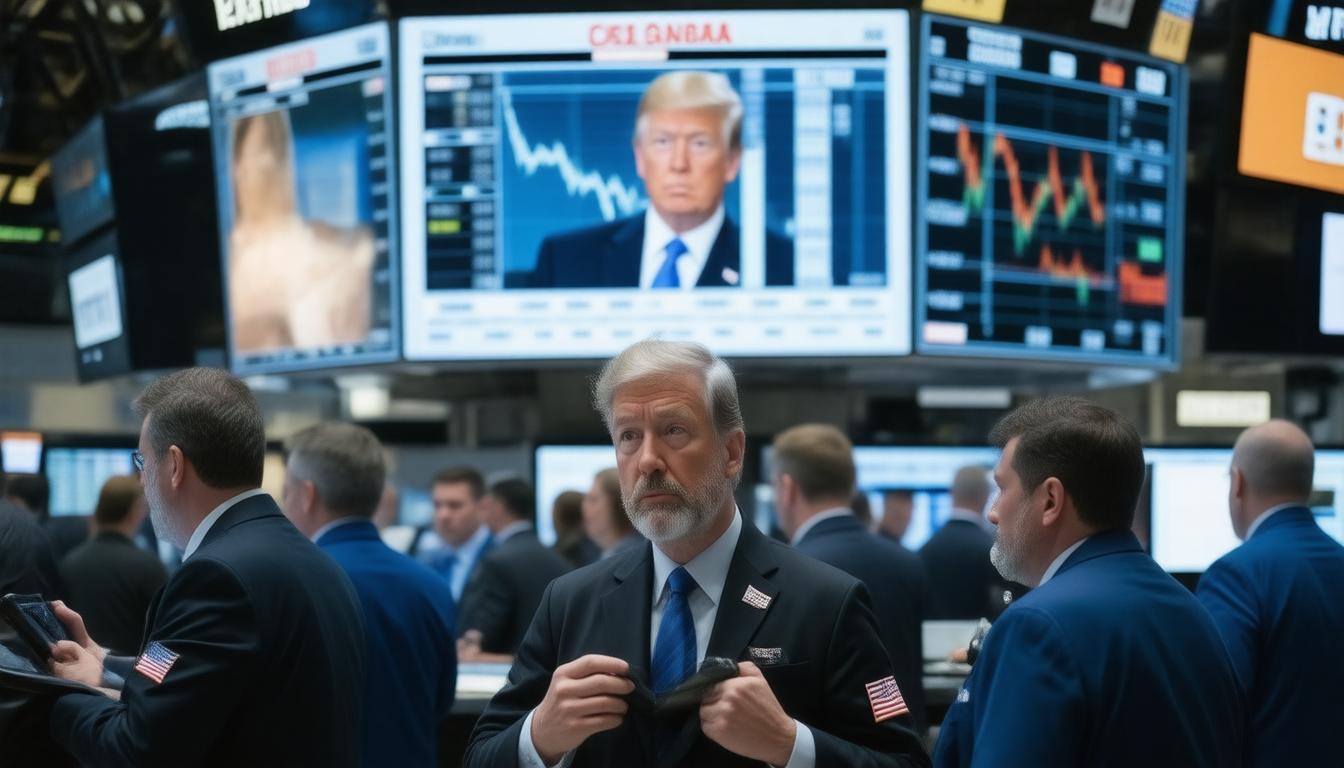In a significant development that has shaken investor confidence, President Donald Trump confirmed the implementation of new tariffs on imports from Mexico and Canada, triggering a major selloff across American stock markets. As of the close of trading, all three major indices—the Dow Jones Industrial Average, S&P 500, and NASDAQ—posted steep losses, with the Dow plummeting by over 700 points.
The Details of the Tariffs
The tariffs in question include a sweeping 25% levy on all imports from Mexico and Canada, with a slightly lower 10% tax applied specifically to Canadian energy products. Additionally, Trump announced a 10% increase on Chinese imports, which adds to an already tense trade relationship between the U.S. and China. The immediate effect of the tariffs was palpable in the markets, particularly for companies that hold substantial operations in these neighboring countries.
Market Reaction and Volatility
The market response was immediate and drastic. Charts of the Dow showed a steep decline coinciding with Trump’s press conference, during which he took questions regarding the tariffs. At one point, the Dow experienced a drop of nearly 900 points, underscoring widespread investor anxiety regarding the implications of these tariffs. Automakers such as Ford and General Motors felt a direct impact, as their extensive manufacturing operations in Mexico and Canada put them at risk under the new tariff regime. Retailers too saw their shares dip significantly, further contributing to the overall market downturn.
While the day was marked by an unsettling drop, analysts urge caution against jumping to conclusions about the stability of the market. As one expert noted, the drop, though substantial, is set against a backdrop of wider volatility that has characterized the market in recent months. This turbulence is not indicative of a full-fledged market crash but rather a reaction to immediate political developments.
Trump’s Historical Perspective on the Stock Market
Historically, President Trump has treated stock market performance as one of his economic benchmarks, often linking it to his administration’s success. However, as many analysts point out, the stock market and the broader economy operate on different planes. While public sentiment might be impacted by stock market indicators, the underlying economic realities can diverge significantly from market figures.
Looking Ahead
As the markets brace for the aftershocks of these announcements, several factors could influence the trading landscape in the short term. The tariffs do not take effect until 12:01 AM the following day, leaving some room for negotiation that could potentially alter their final application. Investors seem to hold a glimmer of hope that a last-minute deal might arise, reminiscent of previous engagements that led to a temporary easing of tariff tensions.
Moreover, attention is turning towards the upcoming congressional address, where Trump is expected to detail his economic strategies further. There’s speculation that he might soften his tones or even take steps towards reconciliation with Mexico and Canada in light of the immediate fallout in the markets.
The Volatility Index
Another metric that investors are closely monitoring is the Volatility Index, often referred to as the "Fear Index." This measure of market fluctuation shot up more than 20% on the day of the tariff announcement, indicating heightened concern among investors about future market conditions. As volatility typically signals uncertainty, the index will likely serve as a barometer of investor sentiment as the situation unfolds leading into the next month.
International Implications
The impact of Trump’s tariffs is not confined to North America. He has stated intentions to retaliate against countries imposing tariffs on U.S. goods, raising the specter of reciprocal tariffs against nations like India, Brazil, and Vietnam. Additionally, the European Union may also find itself targeted, as Trump’s administration contemplates tariffs that, while not straightforwardly labeled, amount to similar classified trade measures.
In conclusion, as markets adjust to this new reality, investors are left grappling with uncertainty. The announcement of tariffs has sent ripples through markets, prompting both immediate and long-term considerations that will shape trade relations in North America and beyond. How these dynamics will unfold in the coming days remains to be seen, but the volatility of the current environment is likely to continue influencing market behavior for weeks ahead.
Ready to get in the game and start making money on Pump.fun? DogWif Tools is the #1 memecoin sniper tool for becoming a Pump.fun millionaire. Get DogWif Tools today and become a memecoin dev!








